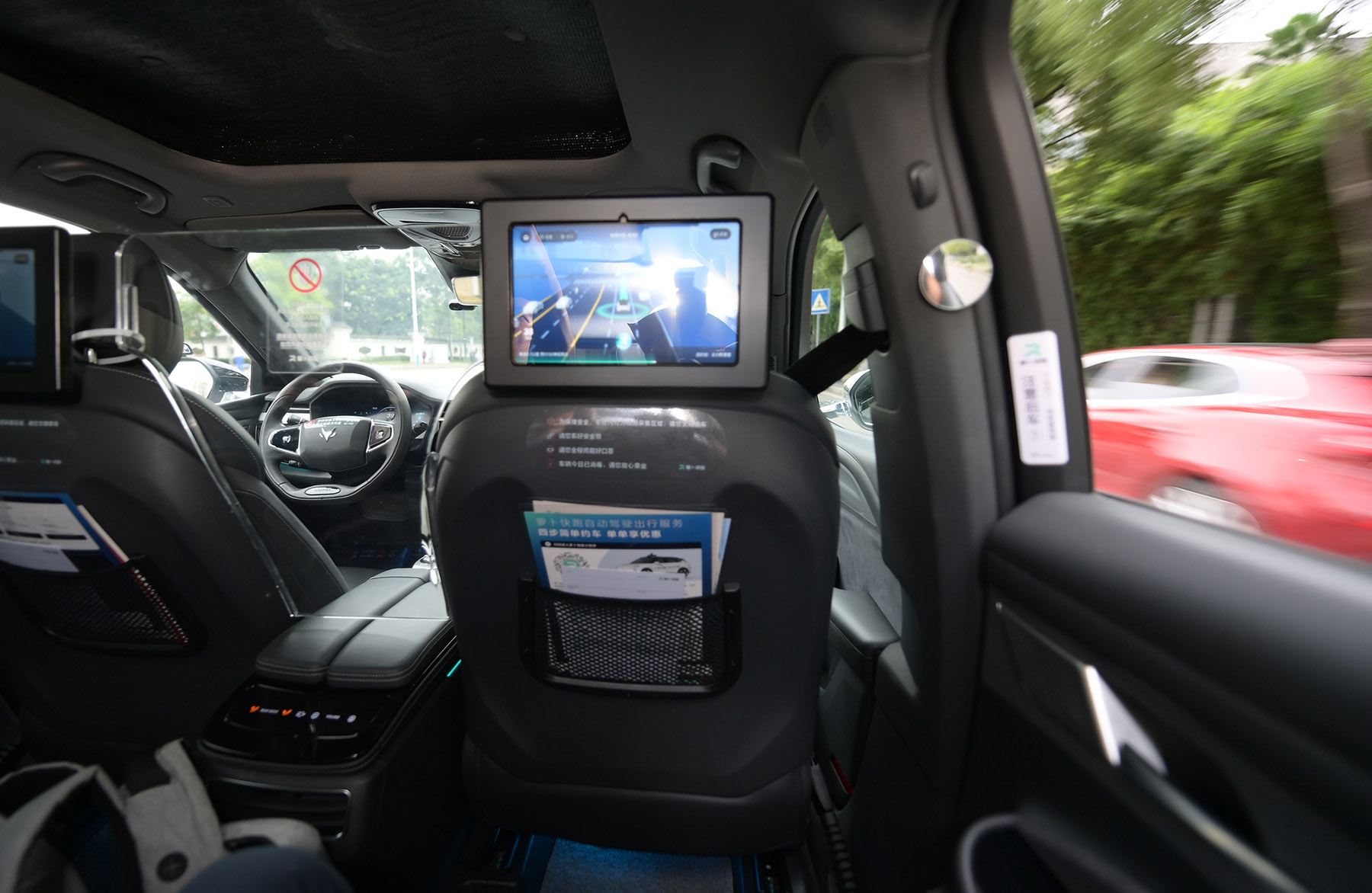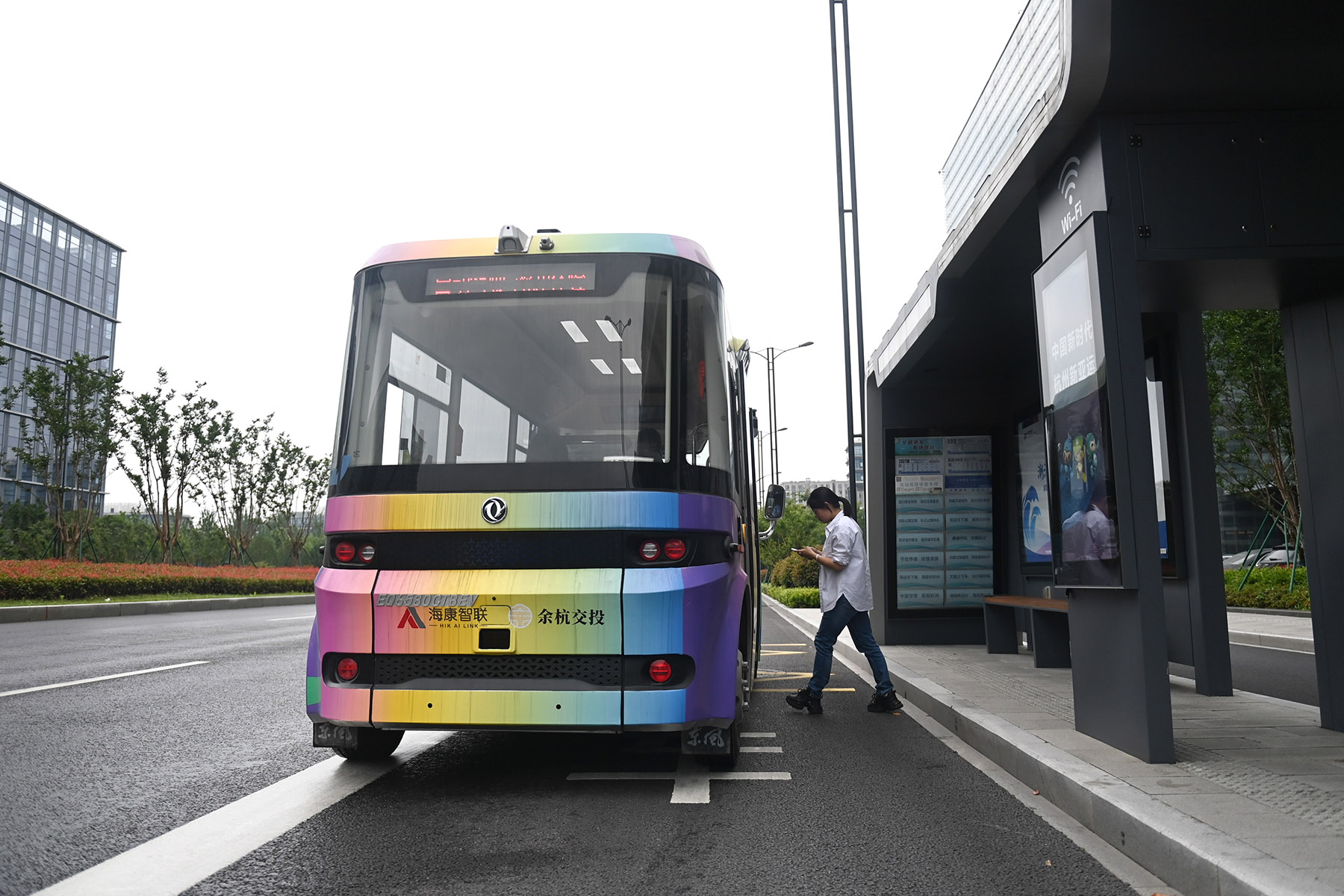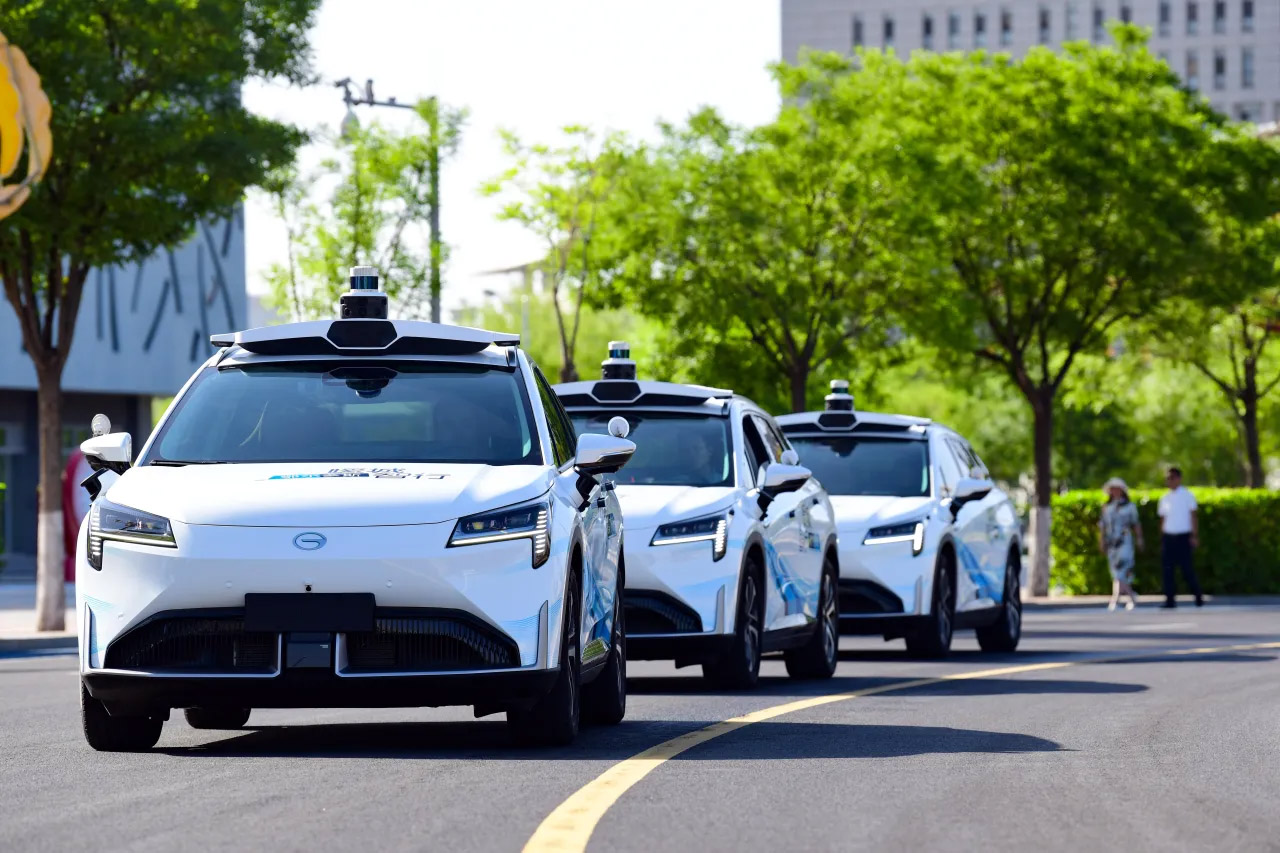Robotaxis are making their presence felt in many Chinese cities despite lingering concerns over safety, reliability

Self-driving vehicles are navigating from science-fiction movies to the streets of large Chinese cities, overcoming obstacles and uncertainty as they enter everyday use.
The fast-evolving technology first made headlines in China almost a decade ago. In 2015, Swedish carmaker Volvo organized a test of its hands-free vehicles traveling at 70 kilometers per hour on Beijing’s Sixth Ring Road.
Chinese technology giant Baidu set up its intelligent driving group in 2017, unveiling its Apollo autonomous driving plan the same year. Pony.ai, founded by former Baidu engineers, established its first autonomous driving research and development center in 2016.
By late February 2024, more than 20 cities had put in place policies supporting autonomous driving tests, issuing licenses to over 60 firms.
Progress had been generally going smoothly until July, when a short video went viral on social media of one of Baidu’s Apollo Go driverless vehicles hitting a scooter in Wuhan, capital of Hubei province.
Baidu was quick to explain that the accident was because the scooter driver had run a red light when the driverless vehicle started to move.
Despite the accident being a minor one, as shown in the footage, it ignited complaints from local drivers and residents.
Apollo Go’s Chinese name is Luobo Kuaipao, which literally means “robots run fast”. But in Wuhan they are called “dumb robots”, as more video footage emerged showing their mishaps.
One driverless vehicle is seen stopping on the road in front of an empty plastic bag, causing a traffic jam. In another video, two vehicles are seen braking to face each other, and not knowing what to do next.
But safety is the real concern. When that vehicle in Wuhan failed to see the scooter, local residents started to doubt the safety and reliability of driverless vehicles, as manufacturers have long claimed they are safer than human drivers.
At an event in May, Baidu’s vice-president, Wang Yunpeng, said the number of insurance claims of its Apollo Go vehicles over the past two years was one-14th of that for human drivers.
In the second quarter of this year, Baidu’s Apollo Go provided about 899,000 rides for passengers, up 26 percent year-on-year. As of July 28, the cumulative rides provided to the public by Apollo Go surpassed 7 million, the company said in its latest financial results report.
The safety level of autonomous driving is 10 times that of manned driving, according to Pony.ai Vice-President Zhang Ning. The company had conducted 3.5 million km of driverless testing globally as of May this year.

However, a robotaxi does not have a quick solution when an injured passenger or road user needs help and they must wait until the fleet operator sends someone to the scene.
If the accident is a minor one, the insurance company can try to settle and offer a certain amount of money.
However, the issue becomes more complicated in the case of a more severe accident that causes injury or death and entails prison time.
It is likely the fleet company will be held accountable, but it is unclear who would be sent to jail — the software engineer, the CEO, the company owner, or possibly more than one of them.
Taxi drivers are also complaining that robotaxi firms are stealing their customers by offering generous subsidies.
A receipt for a 28-km, 64-minute robotaxi trip in Wuhan showed that the fare was just 26.52 yuan ($3.65), much cheaper than the normal taxi fare. But a closer look revealed that it had a discount of 109.52 yuan.
Wuhan has over 3,300 km of roads eligible for robotaxis, the longest in China. Robotaxis booked 850,000 rides in the first half of this year, more than for the whole of 2023, according to a Hubei Daily report.
In July, an Apollo Go vehicle booked up to 20 rides in one day, the same number as a regular taxi, according to Shanghai-based news portal Jiemian.
There are around 400 Apollo Go vehicles in Wuhan, said Baidu CEO Robin Li. “Our fleet accounts for just 1 percent of Wuhan’s total taxi fleet,” he said.
William Li, founder and CEO of NEV startup Nio, has sided with the taxi drivers.
He said that the goal of technology such as smart driving is to alleviate the burden of driving, and not to steal jobs from low-income earners. “We will never do robotaxis,” he said.
Nio has been investing heavily in driving-assist functions.
Gu Dasong, executive director of the Southeast University’s Research Center for Transportation Law and Development, said robotaxis cut the need for commercial drivers, such as taxi and freight drivers, to some extent over the long term.
However, the move to robotaxis will profoundly transform the labor market, with new job opportunities arising from such services.
Baidu insists that robotaxis, if applied at a city-level, can solve problems such as traffic jams and road accidents.
However, as long as there are drivers and robotaxis on the road at the same time, reduced congestion and collision-free motoring will not happen, analysts said.

Robotaxis tend to be good at following traffic rules and staying alert, but human drivers sometimes cut lanes and do not always focus on road conditions, they added.
Despite the teething problems, robotaxis will soon make sense commercially. With decreasing hardware costs and increasing orders, Apollo Go is expected to become profitable by 2025, Baidu said.
Apollo Go loses almost $11,000 a car annually in Wuhan, Haitong International Securities estimated. A lower-cost driverless model could enable per-vehicle annual profit of nearly $16,000.
Chen Zhuo, Apollo Go’s general manager, said the firm would become “the world’s first commercially profitable” autonomous-driving platform.
Pony.ai is confident about the sector’s prospects as well. In a 160 square-km designated zone in Beijing’s E-Town, a national-level economic-technological development area, the company operates nearly 100 robotaxis.
Compared to years ago, the rides are much smoother with no abrupt braking, and the vehicles run in a similar way to other taxi services.
Pony.ai aims to increase its single-city robotaxi fleet tenfold by 2025 or 2026, said the company’s vice-president, Zhang, in an interview with Xinhua.
“We’ve now come to the stage where it is possible to reduce costs on a larger scale of commercialization,” he said. “As long as the robotaxi fleet reaches above 1,000 in one city, we will be able to break even in operation (terms).”
Pony.ai is teaming up with Japanese carmaker Toyota to roll out new-generation vehicles. They will have pre-installed autonomous driving technology, making production more efficient.
“Five or six years ago, most people doubted whether autonomous driving could take root in China. There are no such doubts now,” Zhang said.
Investor interest is also fueling the sector’s progress.
Pony.ai has secured more than $1.4 billion of financing from both domestic and foreign investors since 2017. The company was valued at $8.5 billion as of October last year.
The investment environment for the industry has been improving since last year, despite fluctuations in previous years, according to the company.
WeRide, based in Guangzhou, Guangdong province, plans to offer 6.45 million American depositary shares at a price range of $15.50 to $18.50 in its upcoming initial public offering, according to a company filing with the US Securities and Exchange Commission in August.
The company reported revenue of 401.8 million yuan in 2023. For the first six months of this year, revenue was 150.3 million yuan, according to the filing.
WeRide generates most of its revenue from sales of its Level 4 autonomous driving vehicles, “primarily including robobuses, robotaxis and robosweepers, and related sensor suites; and … the provision of L4 autonomous driving and advanced driver-assistance system services, including the provision of L4 operational and technical support services as well as ADAS research and development services”, the filing said.
The Society of Automotive Engineers International defines six levels of automation from Level 0 to Level 5. Level 4 means the vehicle can operate itself in most circumstances, while L5, also known as full driving automation, requires no human participation.
All China’s robotaxi companies are working on Level 4 vehicles.
Global consulting firm McKinsey& Company has forecast that China will become the world’s largest market for self-driving vehicles, with revenue from such vehicles and mobility services exceeding $500 billion by 2030.


